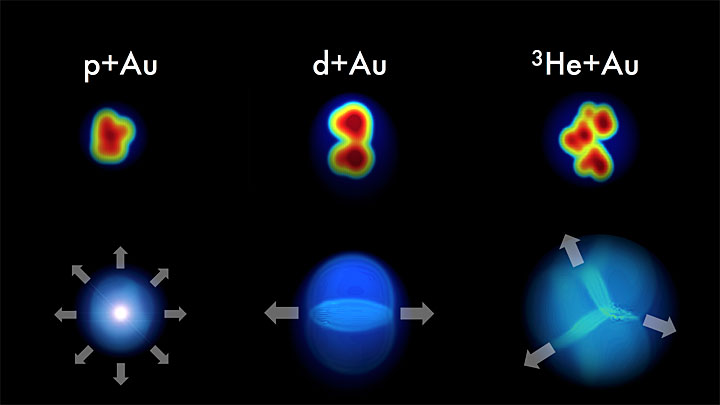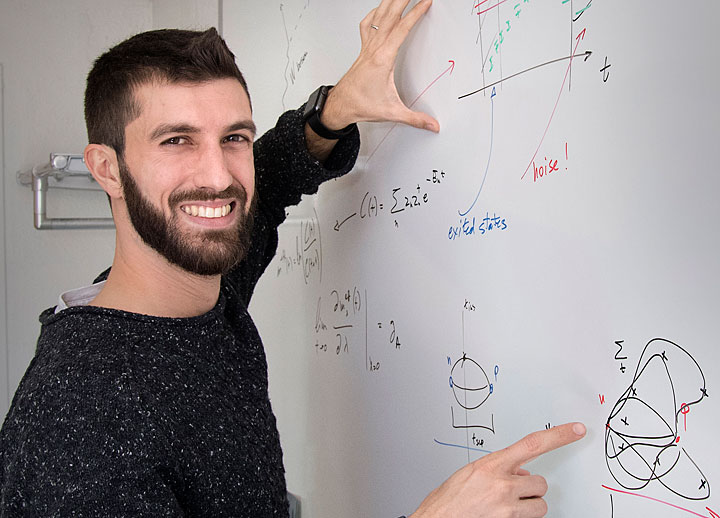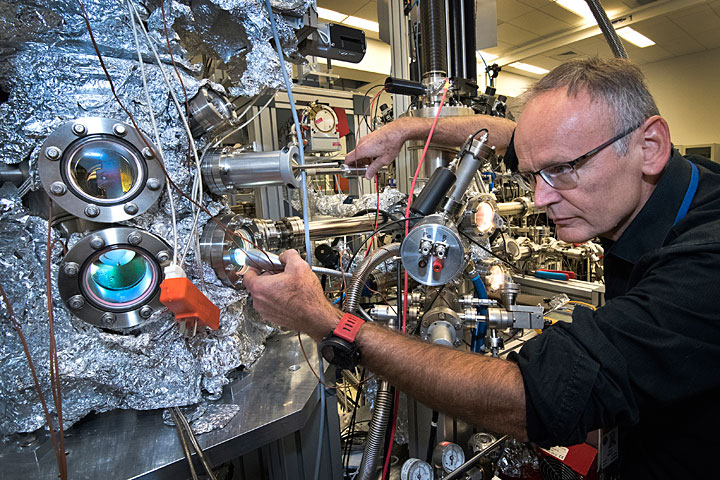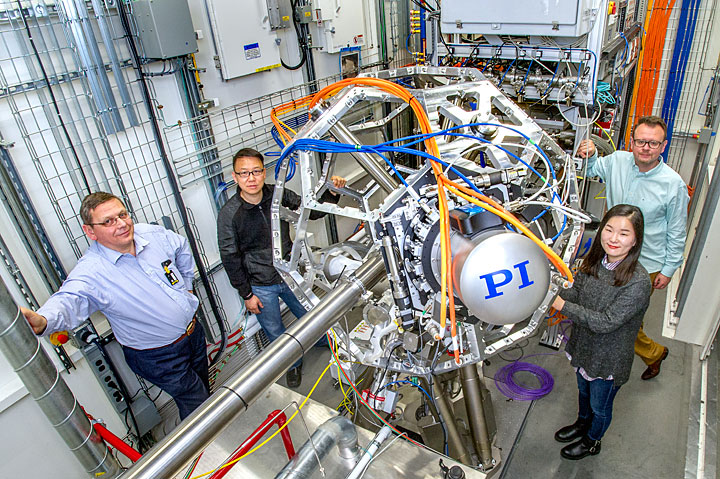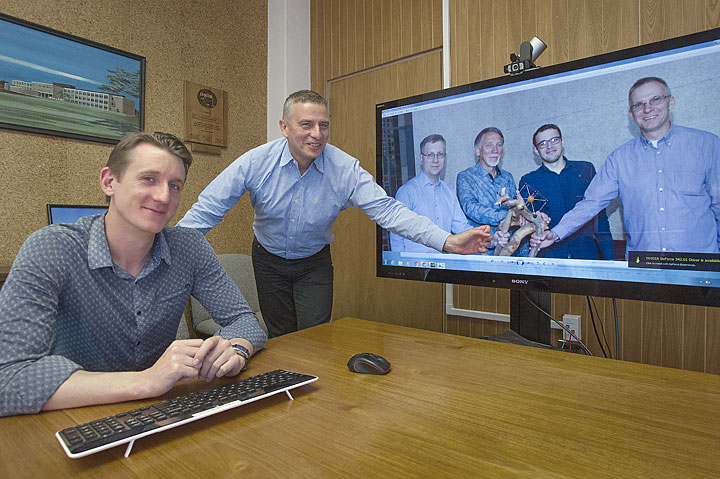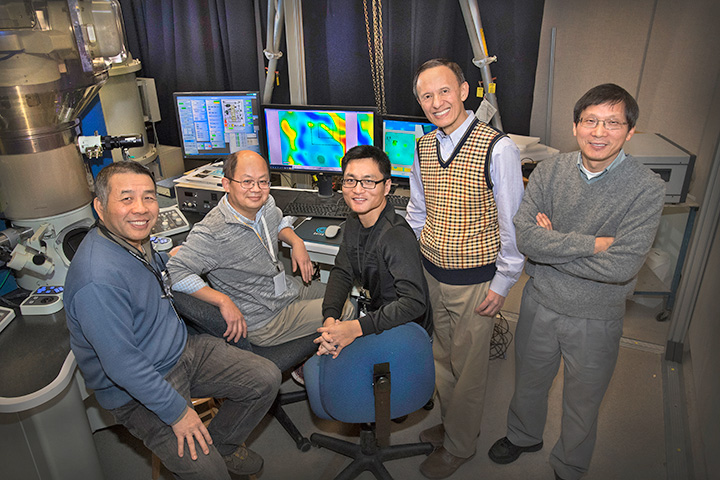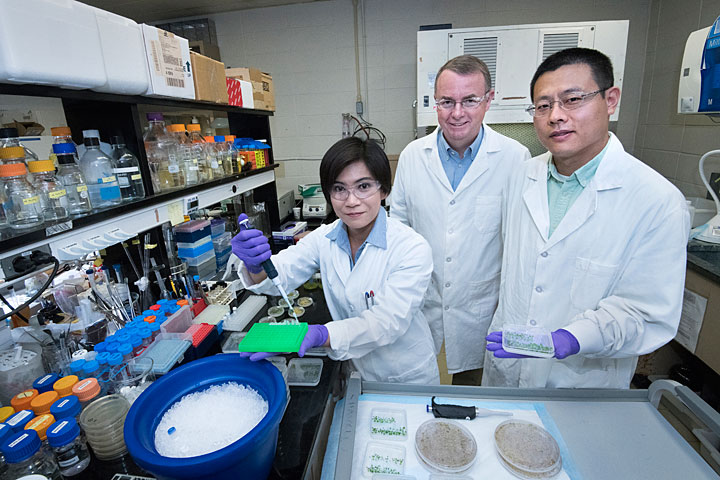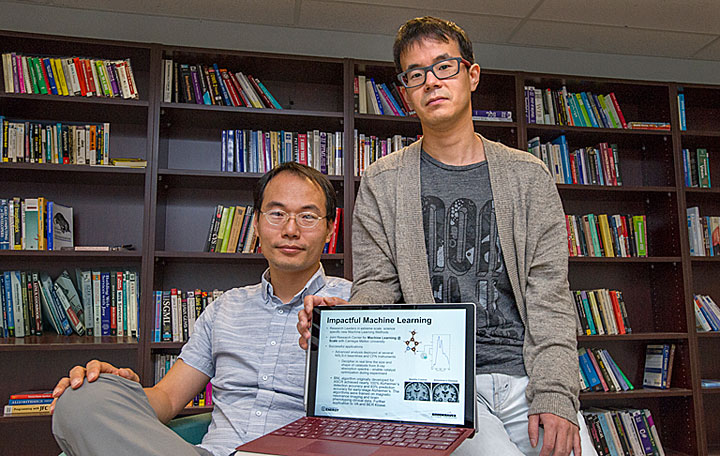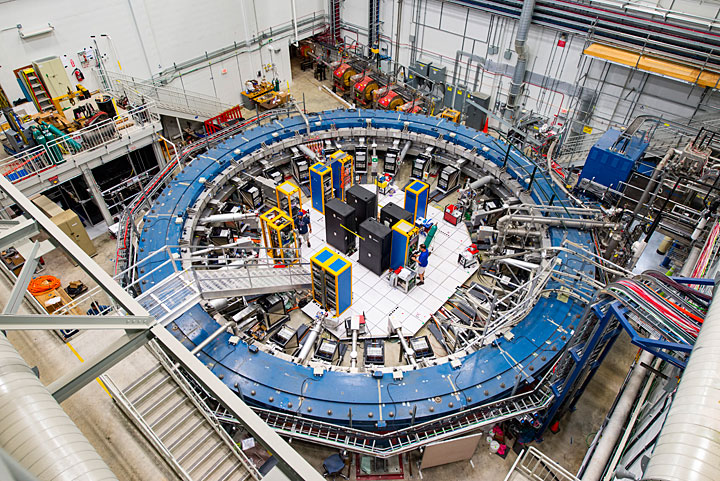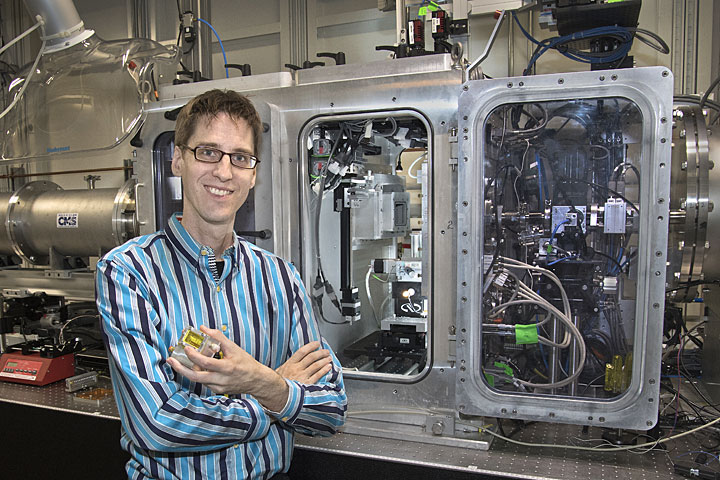Top 10 Discoveries of 2018
January 7, 2019
Every year, the U.S. Department of Energy’s (DOE) Brookhaven National Laboratory compiles a list of the biggest advances made by the Lab’s staff scientists, engineers, and visiting researchers. From uncovering mysteries of the universe to building better batteries, here, in no particular order, are our picks for the top 10 discoveries of 2018.
Small Drops of Perfect Fluid
Nuclear physicists analyzing data from the PHENIX detector at the Relativistic Heavy Ion Collider (RHIC)—a DOE Office of Science user facility for nuclear physics research at Brookhaven Lab—published additional evidence that collisions of miniscule projectiles with gold nuclei create tiny specks of the perfect fluid that filled the early universe. The ability to create such tiny specks of the primordial soup, known as quark-gluon plasma, could offer insight into the essential properties of this remarkable form of matter and the strong force interactions that hold quarks and gluons together in the visible matter that makes up our world today.
Key Calculation Related to Neutron Lifetime
Brookhaven scientists played a central role in developing simulations that contributed to the highest-precision calculation of a fundamental property of neutrons known as the axial coupling. This quantity can be used to more accurately predict how long neutrons are expected to “live,” which is important for understanding how atomic nuclei formed after the “Big Bang” and how the relative abundance of atoms like hydrogen and helium could affect the formation of future stars. The simulations provided input to complex calculations that were run on some of the world’s most powerful supercomputers by an international team that included scientists from several DOE national laboratories.
Unexplored Territory in Superconductivity Search
Scientists mapping out the quantum characteristics of superconductors—materials that conduct electricity with no energy loss—used tools at Brookhaven’s new OASIS laboratory to uncover previously inaccessible details of one commonly studied superconductor. The OASIS laboratory allows scientists to study these materials under precisely controlled conditions. The new data includes signals of what happens when superconductivity vanishes under somewhat less-complex conditions than in previously mapped regions of the “phase diagram.” This knowledge might give insight into the essential conditions for triggering superconductivity, and how this promising property might be harnessed for energy-saving applications.
Single-Atom Catalysts for Clean Energy and Environmental Remediation
To optimize the efficiency of catalysts—substances that initiate or speed up chemical reactions—scientists have started to break them down into single atoms, increasing their surface area and enhancing their reactive properties. In 2018, Brookhaven scientists discovered several new, single-atom catalysts that break down environmental pollutants and produce clean energy. Two studies identified single-atom catalysts that break down carbon dioxide into building blocks for clean energy—one catalyst made from single nickel atoms, a cheap and abundant material, and one catalyst that reacts in response to sunlight. A third study identified a single-atom catalyst for breaking carbon-fluorine bonds, one of the strongest known chemical bonds and one that is found in polyfluoroalkyl substances, an environmental contaminant widely detected around the world.
From Face Recognition to Phase Recognition
A team including chemists from Brookhaven Lab used an approach analogous to facial-recognition technology to track atomic-scale rearrangements relevant to understanding phase changes, catalytic reactions, and more. The team trained a neural network to recognize features in a material’s x-ray absorption spectrum that are sensitive to the arrangement of atoms at a very fine scale. This method helped reveal details of the atomic-scale rearrangements iron undergoes during an important but poorly understood phase change. The technique can be used to track the subtle atomic-scale shifts that occur at intermediate stages in chemical reactions, and may help scientists design molecules to speed up or direct the reactions they want to produce useful products.
Longer Lasting Batteries
By combining electron and x-ray imaging techniques at multiple Brookhaven facilities, scientists made new breakthroughs in the quest to improve lithium-ion batteries—the most common type of battery found in home electronics and a promising solution for grid-scale energy storage. In one study, scientists witnessed, for the first time, how lithium ions move inside individual nanoparticles in batteries, uncovering a surprising behavior and significantly improving scientists’ understanding of how such batteries work. In a second study, scientists developed a new cathode material that could triple the capacity limits of traditional lithium-ion batteries. The results of these studies could help technology companies develop batteries that charge faster and last longer.
Biochemistry Boosts Plant-Oil Production
Brookhaven biochemists made several discoveries that could help boost plants’ production of oil to be used as a biofuel or a feedstock for making other useful chemicals. One study identified signals that normally put the brakes on oil production. Disabling these biomolecular brakes could push oil production into high gear. In a second study, the scientists worked out the details of how certain sugar-sensing molecules help regulate the production of oil in plants. They used a fluorescent dye to track molecular interactions and discovered how a previously unknown intermediate molecule helps keep oil production cranking when lots of sugar is around. Understanding these molecular details could lead to new ways to get plants to prioritize the production of oil.
Computational Advances for Medical Applications
Computational scientists at Brookhaven have made new advances in machine learning and software design that will help medical professionals provide better treatments to patients. In one study, researchers used machine learning models to diagnose Alzheimer’s disease with 98% accuracy, as well as mild cognitive impairment, a precursor to Alzheimer’s, with 84% accuracy. The finding could help medical professionals diagnose Alzheimer’s at an earlier stage, and therefore delay the progression of the disease significantly. In a second study, computational scientists developed a new software framework that can rapidly evaluate efficacy of new drugs for a variety of diseases. By calculating how strongly compounds bind to target molecules, the software could improve the speed and accuracy of drug discovery in the pharmaceutical industry, as well as individual patient outcomes in clinical settings.
Precision Prediction of Muon ‘Wobble’
A team of theoretical physicists released the most precise prediction of how subatomic particles called muons—heavy cousins of electrons—“wobble” off their path in a powerful magnetic field. The calculations take into account how muons interact with all other known particles through three of nature’s four fundamental forces (the strong nuclear force, the weak force, and electromagnetism) while reducing the greatest source of uncertainty in the prediction. The results come just in time for the start of a new experiment measuring the wobble now underway at Fermilab, which should help establish whether a discrepancy between experiment and theory observed at an earlier Brookhaven version of the experiment still stands.
Engineering New Pathways for Self-Assembled Nanostructures
Brookhaven researchers helped investigate how “self-assembly”—when molecules are designed to spontaneously come together to form a desired structure or pattern—can be exploited to engineer a nanostructure in a block copolymer, a well-studied and versatile class of self-assembling materials. The scientists used a very specific set of steps dubbed “pathway engineering”—a new approach developed at Brookhaven—to yield self-assembled patterns with long-range nanoscale order in a block copolymer thin film. New techniques like this one, which bridge between the nanoscale and the macroscale, provide useful tools for synthesis of advanced materials with tailored properties.
Brookhaven National Laboratory is supported by the Office of Science of the U.S. Department of Energy. The Office of Science is the single largest supporter of basic research in the physical sciences in the United States, and is working to address some of the most pressing challenges of our time. For more information, please visit science.energy.gov.
Follow @BrookhavenLab on Twitter or find us on Facebook.
2019-13287 | INT/EXT | Newsroom




